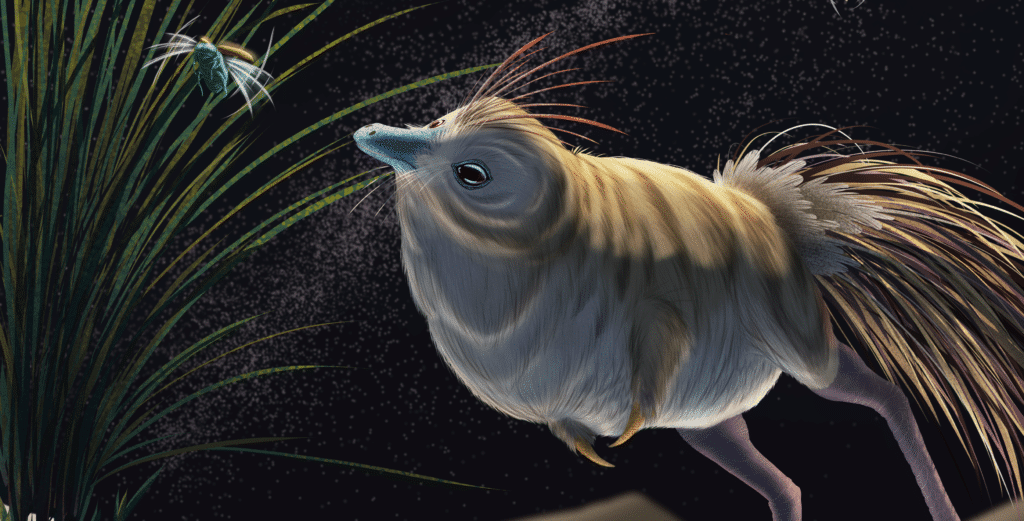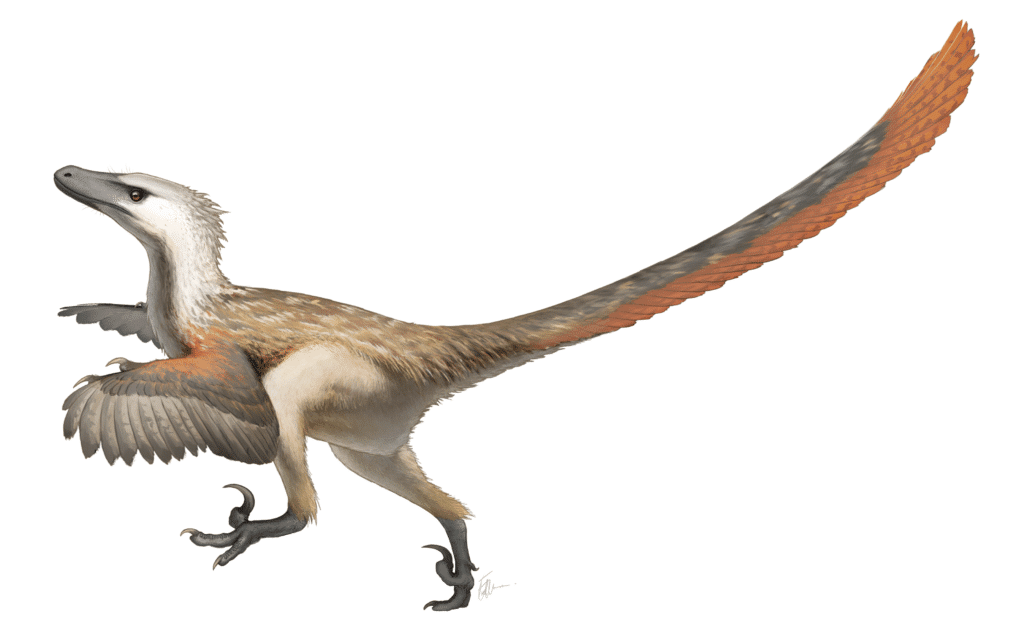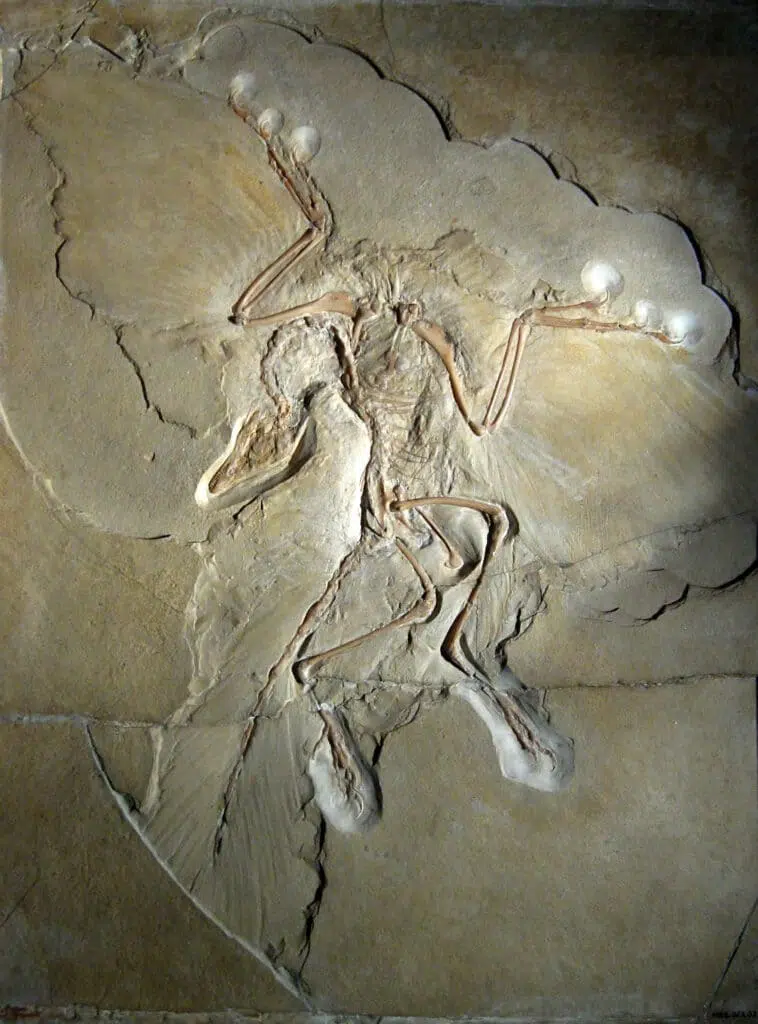It’s official: birds are literally dinosaurs. Here’s how we know

Drop any preconceptions of dinosaurs, which are likely reptile-centric and warped by Spielberg; the real dinosaurs are outside your window. Yes, birds are dinosaurs. Shaun Hurrell interviews dinosaur evolution expert Professor Roger Benson to unearth the latest research on the origin of birds.
Roger Benson’s latest paper features a feathered, chicken-sized, bird-like dinosaur revealed to have the hearing ability to rival a barn owl – a specialised nocturnal predator. Combined with short, muscular arms ending in a single giant claw for digging, Shuvuuia deserti (meaning ‘desert bird’) is not what you might classically expect from a dinosaur. Such are the revelations from fossil discoveries in recent decades that are changing how we see birds today. Professor of Palaeobiology at the University of Oxford, Roger researches the evolution of dinosaurs – including bird origins – and large-scale evolutionary patterns. He explains why ‘dinosaur’ is more ‘incredible bird’ than ‘terrible lizard’…
Are birds really dinosaurs? Is it disputed?
There’s no longer really any doubt that birds are a type of dinosaur. These days, the debate is about details. The strong evidence doesn’t just come from fossilised bones and similarities found across the skeleton, but from fossilised soft tissue – especially feathers. Many dinosaurs had not just some kind of body covering, but distinctive bird-like feathers. Rare fossils also give us glimpses of the behaviour of bird-like dinosaurs, such as Mei long, a small, duck-sized bipedal dinosaur from the Cretaceous era. It was found preserved in volcanic ash falls – a bit like Pompeii – captured curled up in a sleeping position very similar to how a lot of birds roost today.
If feathers evolved in dinosaurs, what is the origin of birds?
Birds belong to the theropod group of dinosaurs that included T. rex. Theropods are all bipedal and some of them share more bird-like features than others. Archaeopteryx, discovered in 1861, was for a long time the only truly bird-like dinosaur – it’s from the Late Jurassic era (150 million years ago). Others closely related to birds, like Velociraptor, can be from the Late Cretaceous (100-66 million years ago), so they’d also had a lot of time to evolve independently. It’s the Late Jurassic where we start finding really interesting, distinctive, bird-like dinosaurs – especially with recent fossils from China preserved in fine-grain sediments from lake beds.
Such as?
Anchiornis is a Late Jurassic winged dinosaur, with large feather arrays on its legs. Fossils like this suggest the intriguing possibility that birds evolved from a gliding ancestor that had effectively four wings. That is cool. Also, Yi qi was discovered in the last couple of years. Its fossil has preserved soft tissue with a bat-like wing membrane.
Could they fly?
Not all of the dinosaurian close relatives of birds could fly. But those that could, flew in a range of different ways – suggesting early evolutionary experiments of flight, with birds being the most successful of those experiments, and persisting to the present.
Were the Velociraptors in Jurassic Park covered in feathers?
We can confidently think of Velociraptor as having a bird-like feather covering, even though its fossils only preserve the bones. The skeleton has quill knobs on the ulna (wing bone – also found on today’s birds). Close relatives are better-preserved and show a complete body covering, ranging from down to quill feathers. They couldn’t fly, so the feathers could be to do with display. Reconstructions have moved on a bit since Jurassic Park… Artists have only recently let go of scaly, reptilian-like depictions. We can think of dinosaurs as more bird-like than reptile-like.
Above: an artist’s interpretation of Shuvuuia deserti, which means ‘desert bird’
© Viktor Radermacher

Were they warm-blooded?
For dinosaurs closest to birds – or, in fact, dinosaurs in general – we have so much evidence that suggests they were warm-blooded, short of actually sticking a thermometer in one. Growth rates and insulation are the smoking gun. They grow fast – we know from cutting up bones – faster than reptiles (including those from the same period), but not quite as fast as modern birds or mammals. For theropods where we can see soft tissue, we can see insulating feathers. All dinosaurs were on the road to becoming warm-blooded, with steps towards faster metabolic rates and very high body temperatures somewhat after the origin of birds. There wouldn’t have been a sluggish T. rex waiting for prey to walk by; we should think of them as active, curious animals.
What would you say to people that would say birds aren’t dinosaurs?
If birds aren’t dinosaurs, then we have no idea what they are. Birds share so many features with theropods and there are no other candidate fossil groups. When you understand that birds are a type of dinosaur, that the evidence has stacked up, everything starts to make more sense. Birds inherit their bipedalism from theropods, explaining why they evolved flight using just their forelimbs, unlike bats or pterosaurs. If that hypothesis was wrong, we’d expect to be just as uncertain about bird origins today as 30 years ago.
But didn’t Triceratops, from a completely distant group of dinosaurs, have a beak?
Many groups have lost teeth and evolved a beak. Triceratops had a beak at the front of the mouth. Sheep also lack teeth at the front in their upper jaw. That’s for grabbing vegetation, and evolves frequently.
Is flight the key to the origin of birds, then?
Palaeontologists ask ‘what makes Archaeopteryx a fossil bird rather than another bird-like dinosaur?’, and it’s the capability of powered flight. The wing feather arrangement is much more similar to modern birds. But the more we know about bird-like dinosaurs, the more we find that specific features of birds have an older origin. Walking on two legs, having feathers, laying eggs, warm bloodedness – they’re just inherited features from dinosaurs.
How did powered flight begin in bird-like dinosaurs?
Not everyone agrees, but many think they were tree-climbing animals that glided. I think they evolved flight from the trees down. From an aerodynamic perspective it’s easier to see how that would work. To evolve flight from the ground up, evolution would need to master a number of different things about flight control and power quickly. That’s more difficult. When did they learn to climb trees? We would like to know!
“There wouldn’t have been a sluggish T. rex waiting for prey to walk by; we should think of them as active, curious animals.”Professor Roger Benson

Why were birds the only dinosaurs that survived the mass extinction at the end of Cretaceous?
We know from the fossil record that large-bodied land animals were hit hard. Only the tiny survived. The smallest dinosaurs weighed about 500 g, but to survive as a land mammal you needed to weigh less than 50 g, and even then the chances were very slim. Lots of bird groups also went extinct. All sorts of reasons have been suggested – such as being a seed-eater or fish-eater (after the 10-km diameter meteor struck, there was a lack of sunlight due to dust, and freshwater ecosystems were a refuge). Some places would have been less terrible than others – clearly proximity to the impact zone in Mexico would have been terrible – but there were global effects.
Will only small animals survive the current sixth mass extinction and the bird declines BirdLife scientists are monitoring today?
We know from the fossil record that mass extinctions happen, but each one has a different cause and pattern. So we can’t predict what will happen next based on past mass extinctions. It’s much better to look at what’s happening to birds and other animals right now. The extinction of the dinosaurs is the most abrupt – it could have happened in a single year. The current mass extinction seems a lot faster than some of the other mass extinction events, though, in terms of rate of decline of abundance and rate of species loss. It’s terrifying, but only if it continues. And we have some control of this if people take action.
The other lesson from mass extinctions is that the biosphere will recover. But not in our lifetimes – only on timescales that aren’t useful for human society. Some of our best fossil record studies monitor extinctions with data points every 100,000 years … So today, monitoring birds is one of the most important things we can do to catch species before they’re unknowingly lost.
Favourite bird?
I really like the Inaccessible Island Rail, the smallest flightless bird, living precariously on a tiny island. How can it be so small? It’s got something to tell us about evolution. No dinosaur had ever been that small. Islands are fascinating for an evolutionary biologist and we can’t risk losing this information from science, the sum of human knowledge. That’s just one reason why BirdLife’s work to protect island birds from introduced species is so important.
Given your expertise, how do you feel when you look at birds today?
I like watching them because I like animals and birds are some of the most visible. You can say that a pigeon’s foot is similar to a dinosaur’s – birds have inherited so much from dinosaurs but are also so distinctive in their own right. I respect that and see them doing something fundamentally different to what most dinosaurs would have done. They use resources in a way that ground-walking animals can’t. At any one time there were probably only about 1,000 species of dinosaur on earth, whereas birds have taken what they’ve inherited from dinosaurs and done a lot more with it, giving rise to an enormous diversity of 11,000 species. People love dinosaurs and people love birds. What could be more interesting?
Stay up to date
Sign up to receive the latest bird conservation news. You’ll also receive updates about our projects, science and other ways to get involved including fundraising.
Thank you for your support, we are committed to protecting your personal information and privacy. For more information on how we use your data, please see our Privacy Policy. You can unsubscribe from emails at any time by using the link in the footer of any email from us.


